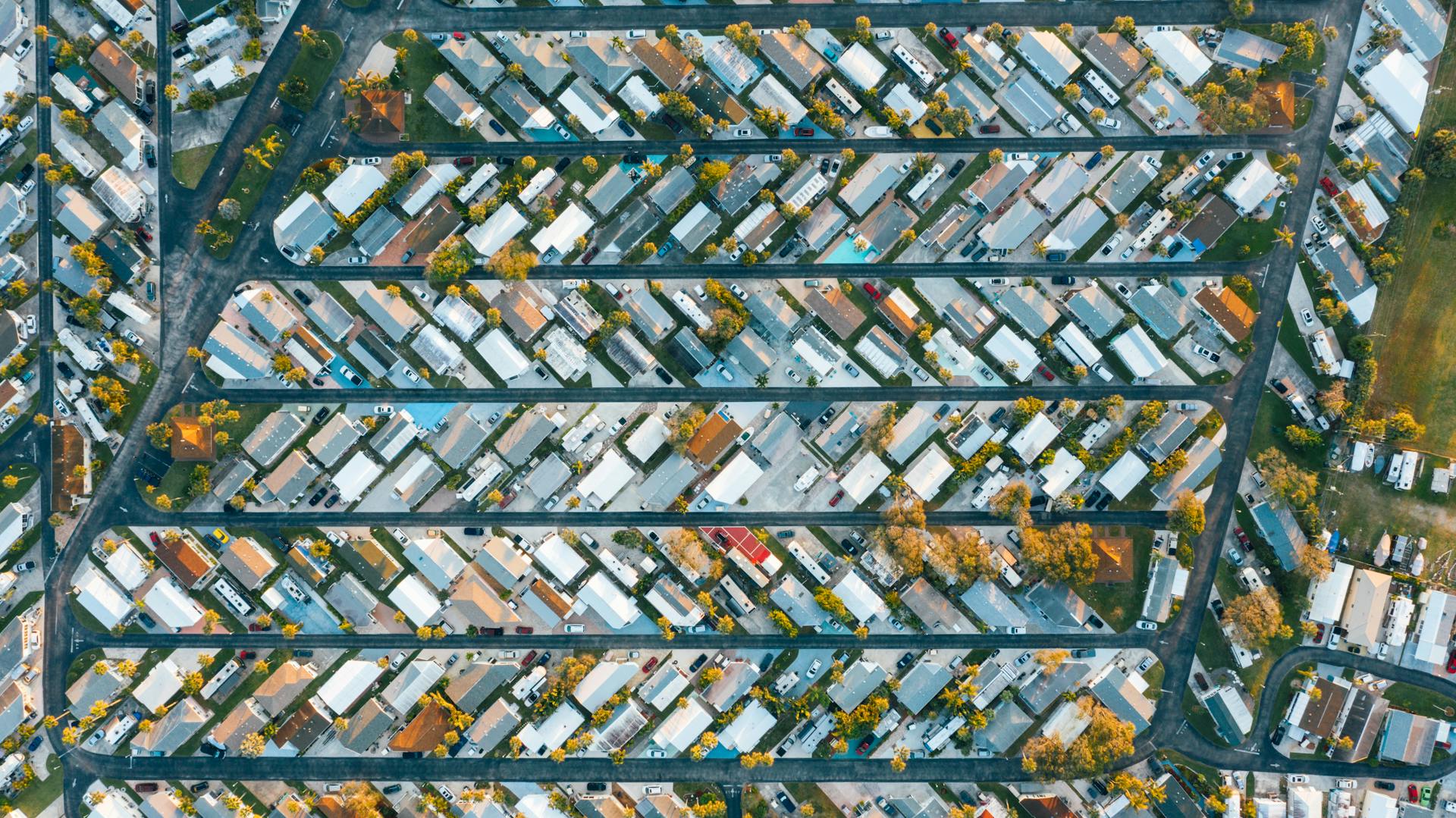
The Belt and Road Initiative (BRI) is a massive infrastructure project aimed at connecting China with other parts of Asia, Europe, and Africa through a network of roads, railways, and sea routes.
Launched in 2013, the BRI is a strategic move by China to expand its economic and cultural influence globally. The initiative is expected to boost trade and investment between participating countries.
As part of the BRI, China has committed to investing over $1 trillion in infrastructure projects across the globe. This includes the development of green infrastructure, such as renewable energy projects and eco-friendly transportation systems.
What Is the Belt and Road Initiative?
The Belt and Road Initiative (BRI) is China's main international cooperation and economic strategy, also known as the "One Belt One Road" or the "New Silk Road".
It was announced by Chinese President Xi Jinping in Kazakhstan in October 2013.
The BRI has a Chinese name of 一带一路, which translates to "One Belt One Road".
See what others are reading: Can You Have More than 1 Life Insurance Policy
The initiative aims to promote economic growth and cooperation among countries along the ancient Silk Road trade routes.
The BRI is a massive undertaking that involves over 130 countries and international organizations.
Here are the main goals of the BRI:
- Goals of the Belt and Road Initiative (BRI)
- Countries of the Belt and Road Initiative (BRI)
- Investments in the Belt and Road Initiative (BRI)
- Greening the Belt and Road Initiative (BRI)
- Governance of the Belt and Road Initiative (BRI)
These goals are ambitious and multifaceted, aiming to promote economic development, improve infrastructure, and enhance regional cooperation.
Goals of the BRI
The Belt and Road Initiative (BRI) has five main goals that aim to create a more integrated and sustainable world.
The five goals of the BRI are policy coordination, facilities connectivity, unimpeded trade, financial integration, and people-to-people bonds.
These goals are the foundation of the BRI, and they're designed to work together to create a more harmonious and prosperous world.
In recent years, the emphasis on developing a "green" and "high-quality" BRI has accelerated, with a focus on ecological civilization and green development concepts.
The Ministry of Environmental Protection (now Ministry of Ecology and Environment) published the Guidance on Promoting Green Belt and Road in 2017, which stresses the importance of resource efficiency and environmental friendliness within the five goals.
Here are the five main goals of the BRI in a concise list:
- Policy coordination
- Facilities connectivity
- Unimpeded trade
- Financial integration
- People-to-people bonds
Financial Mechanisms
Green finance plays a crucial role in the Belt and Road Initiative by providing financial support for renewable energy projects in participating countries. Chinese state-owned financial entities and companies are actively involved in this effort.
Investments, lending, and insurance are key forms of green finance that facilitate the development of renewable energy projects. These financial mechanisms help bridge the funding gap for projects that might otherwise struggle to secure investment.
Chinese state-owned financial entities and companies offer these financial services to host countries of the Belt and Road, supporting the growth of renewable energy projects and promoting sustainable development.
Expand your knowledge: Asset Management Firm Definition
Forms
Forms of green finance include investments, lending, and insurance by Chinese state-owned financial entities and companies for renewable energy projects in host countries of the Belt and Road.
These forms of green finance are crucial for advancing sustainable development in BRI countries. Investments in renewable energy projects can provide a significant source of clean energy and reduce reliance on fossil fuels.
Here's an interesting read: Green Energy Finance
Chinese state-owned financial entities and companies are actively involved in these forms of green finance. They have the resources and expertise to provide the necessary funding for large-scale renewable energy projects.
Investments, lending, and insurance are the key components of green finance in the context of the Belt and Road Initiative.
Bonds
The market for green bonds in China is the second largest in the world. Chinese banks have also issued green bonds in the international bond market.
China Development Bank issued the first green bond specifically for Belt and Road projects in November 2017. This bond had EUR and USD tranches of US$1.1 billion for renewable energy, clean transportation, and water resource management projects in BRI countries.
The Bank of China issued a green bond on the London Stock Exchange in the same month, although not specifically for projects in the BRI.
For more insights, see: How to Wire Money from Bank of America
Project Examples
The Belt and Road Initiative has led to the development of numerous green finance projects. One notable example is the Green Finance Committee of the China Society for Finance and Economics, established in 2016.
The committee aims to promote green finance practices and products in China and globally. It has released several guidelines and standards for green finance.
The Asian Infrastructure Investment Bank (AIIB) has also been involved in green finance projects. In 2016, the AIIB launched its Green Credit Framework to support environmentally sustainable projects.
The framework provides guidelines for AIIB's lending and investment decisions. It considers the environmental and social impacts of projects.
The Green Climate Fund (GCF) has supported several green finance projects in Asia. In 2018, the GCF approved a USD 150 million grant to support the development of a green finance market in Indonesia.
The grant will be used to establish a green finance facility and provide technical assistance to financial institutions.
Guidelines and Engagement
The Belt and Road Initiative (BRI) has made significant strides in promoting green finance, with several policy documents and reports guiding the way. The "Guidance on Promoting a Green Belt and Road" released by the Ministry of Ecology and Environment in 2017 encourages green finance and investment.
Take a look at this: Vulnerable Road Users
A key aspect of this policy is the mobilization of capital for financing green projects through international institutions and funds. The Silk Road Fund, South-South Cooperation Assistance Fund, and China-ASEAN Investment Cooperation Fund are among the institutions and funds mentioned as potential sources of funding.
To support the implementation of green finance, the Development Research Center of the State Council and Export-Import Bank of China released a report in 2019. The report provides recommendations and draws on lessons for China to develop Belt and Road green finance.
Policy
The Chinese government has taken a proactive approach to promoting green finance and investment in the Belt and Road Initiative (BRI). The Ministry of Ecology and Environment, along with four other ministries, released the "Guidance on Promoting a Green Belt and Road" in 2017.
This policy document emphasizes the importance of mobilizing capital for financing green projects, using international multilateral and bilateral cooperative institutions and funds. These funds include the Silk Road Fund, South-South Cooperation Assistance Fund, and China-ASEAN Investment Cooperation Fund, among others.

The China Development Bank and Export-Import Bank of China are tasked with playing a guiding role in promoting green finance. The Development Research Center of the State Council and Export-Import Bank of China released a report in 2019, providing recommendations and lessons learned on green finance for the BRI.
The report highlights the need to implement the concept of green finance, with a focus on sustainable development and environmental protection. The report also emphasizes the importance of international cooperation and collaboration in promoting green finance.
Here are some of the key policies and institutions involved in promoting green finance and investment in the BRI:
- Silk Road Fund
- South-South Cooperation Assistance Fund
- China-ASEAN Investment Cooperation Fund
- China-Central and Eastern Europe Investment Cooperation Fund
- China-ASEAN Maritime Cooperation Fund
- Special Fund for Asian Regional Cooperation
- LMC Special Fund
Handbook on Stakeholder Engagement for Financial Institutions
The Handbook on Stakeholder Engagement for Financial Institutions is a valuable resource that supports environmental risk mitigation. It was developed by a group of organizations including the Green Finance & Development Center, FISF Fudan University, ClientEarth, the Green Investment Principles (GIP), and the Institute for Finance and Sustainability (IFS).
This handbook is a result of cooperation between these organizations and provides guidance on stakeholder engagement for financial institutions. You can download the English version of the handbook from the provided link.
The handbook supports environmental risk mitigation through information disclosure, public consultation, and grievance mechanism.
Related reading: Environmental Impact of Bitcoin
Host Country Demand and Investment Returns Will Determine Where
Host country demand and investment returns will largely determine where finance goes. This is evident in the success of the United Arab Emirates, Turkey, Saudi Arabia, and Oman, which have attracted a significant share of China's overseas investments in solar and wind power over the last 10 years.
These countries have been able to create a favorable environment for clean energy investment by adopting aggressive renewable energy targets and supporting policies. For instance, the UAE government provides land for renewable projects, helping to decrease both costs and risk for investors.
The cost of solar-generated electricity has been driven down to record lows in these countries, thanks to competitive bidding processes and government-owned off-takers. This has accelerated the development of renewable capacity and made these countries more attractive to investors.
However, not all BRI countries have the resources and capacity to follow in their footsteps. Many low-income countries are facing strong economic headwinds, including reductions in revenue, unsettled markets, inflation, and rising interest rates.
Worth a look: National Health Investors Stock Dividend
These economic constraints can make it difficult for developing countries to attract finance for climate solutions. They often lack public capital, which is necessary to "de-risk" green projects and improve their risk-adjusted returns.
Fortunately, there are signs that these headwinds could ease up in the next few years. Inflation in emerging market and developing economies is expected to fall, leaving more space for fiscal spending on clean energy.
Frequently Asked Questions
Who finances the Belt and Road Initiative?
The Belt and Road Initiative is primarily financed by the Chinese state through its state-owned banks lending to state-owned enterprises. This funding model allows the initiative to be driven by the Chinese government's strategic vision and financial resources.
What is the green finance Initiative?
The Green Finance Initiative is a type of financing that supports environmentally-friendly activities and projects. It provides loans or investments for sustainable goods, services, and infrastructure development.
What is the Belt and Road Initiative for Renewable Energy?
The Belt and Road Initiative supports China's shift to advanced technologies and clean energy, opening new markets for its industrial expertise. It aims to accelerate China's proficiency in renewable technologies globally.
Is the Belt and Road Initiative sustainable?
The Belt and Road Initiative aims to achieve long-term green and sustainable development through international collaboration. This goal is supported by the 2030 Agenda for Sustainable Development, ensuring a more environmentally friendly future for all involved countries.
Sources
- https://greenfdc.org/belt-and-road-initiative-about/
- https://en.wikipedia.org/wiki/Green_finance_and_the_Belt_and_Road_Initiative
- https://greenfdc.org/category/belt-and-road-initiative-bri/
- https://www.wri.org/insights/greening-chinas-belt-and-road-initiative
- https://cciced.eco/ecological-progress/accelerating-a-green-bri-by-aligning-the-key-frameworks/
Featured Images: pexels.com


